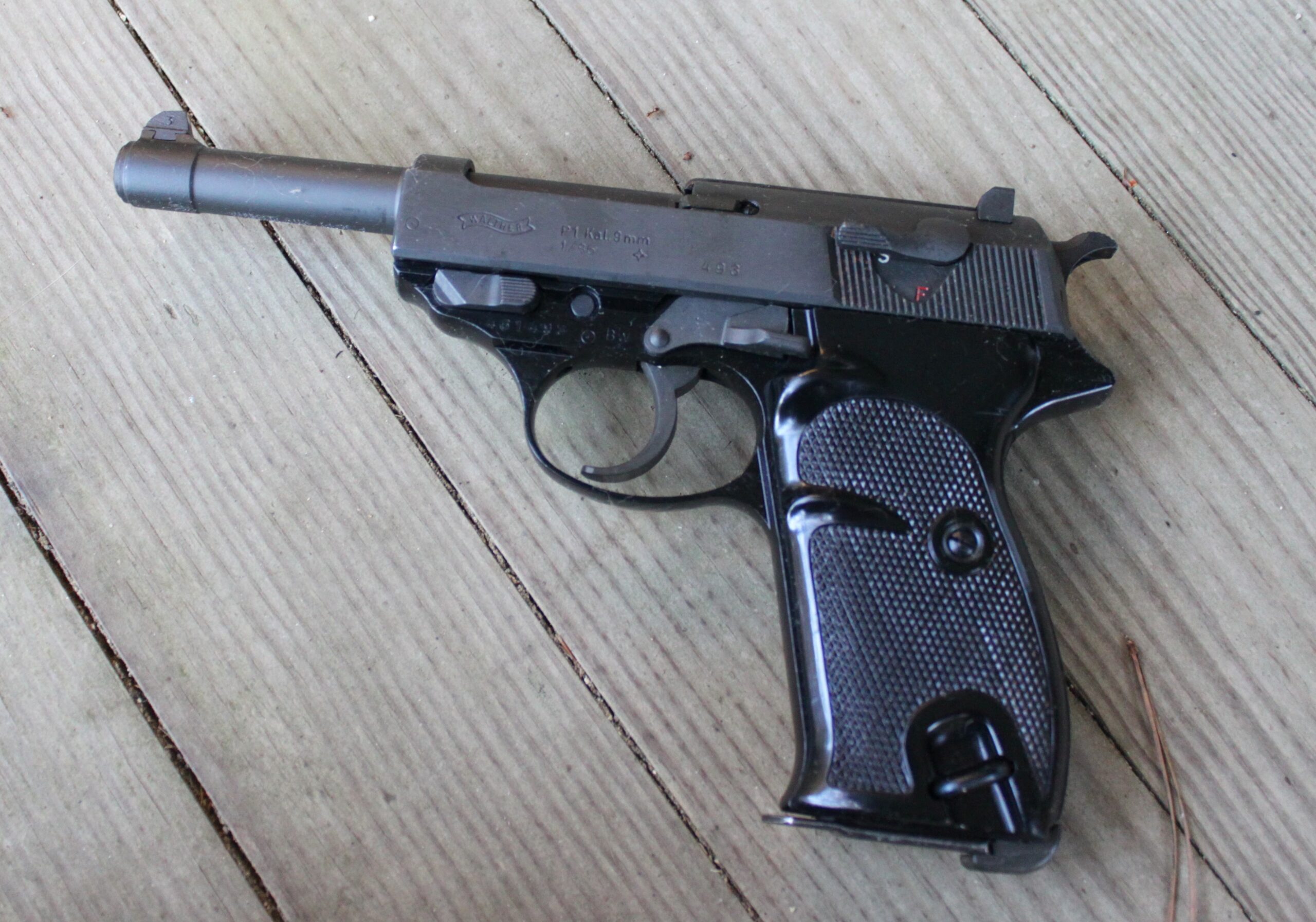
By Jim Dickson | Contributing Writer
During the 1930’s, Germany was actively rearming its military, and the Luger pistol took too long to make and cost too much to be the sole sidearm.
The beloved Luger remained in production and the serious pistol shooters could always get one issued to them. What was needed was a pistol that was cheaper and easier to make for the average officer. The firm of Walther developed what became the P38 to meet these requirements.
The Wehrmacht had demanded an exposed barrel because in the muck and mud of the Great War it was easy to get the barrel blocked with mud, yet the Luger had just kept firing with a bulged barrel when guns with a slide over the barrel jammed at the bulge. Hence the exposed barrel on the P38.
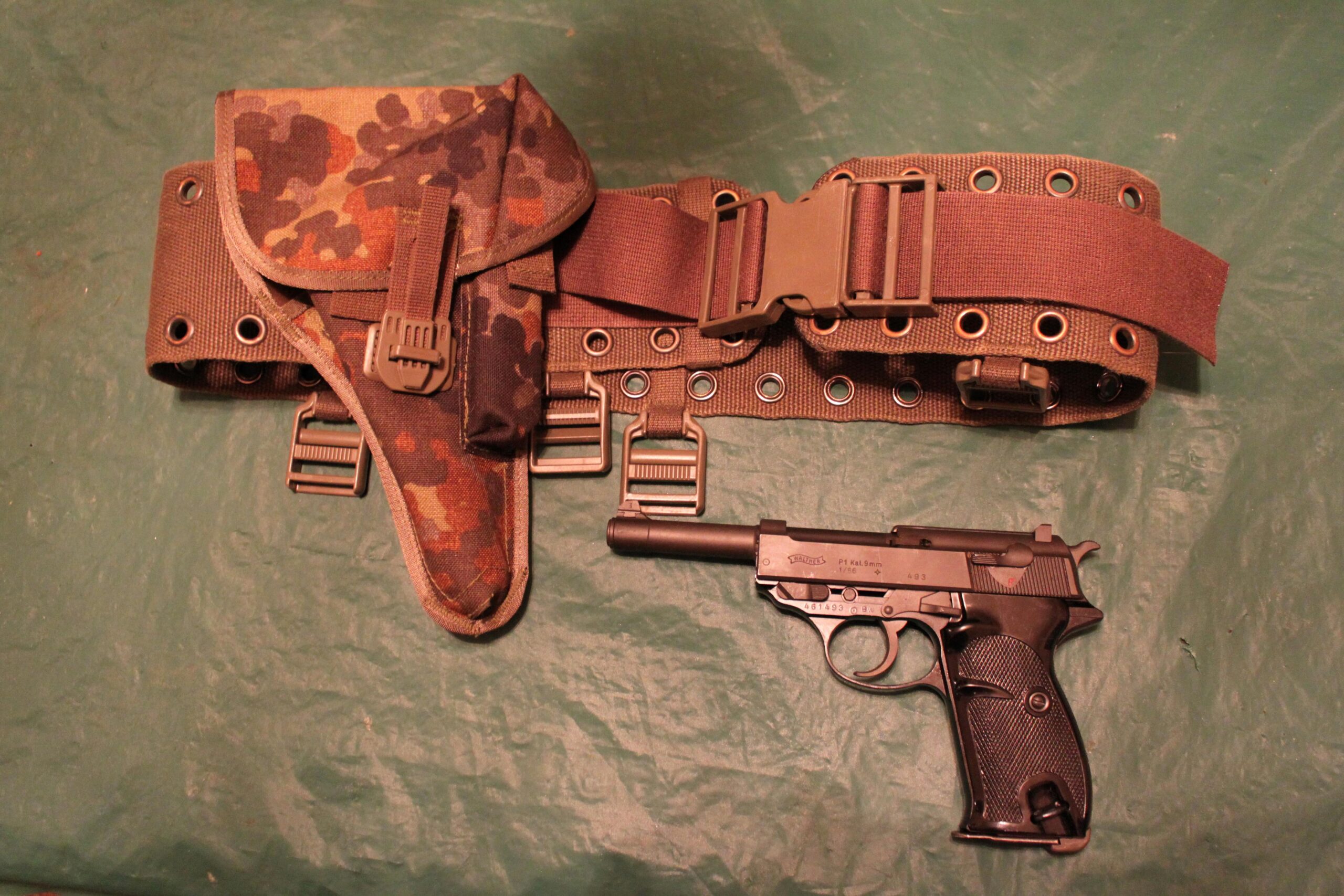
Ammunition used by all sides in the Great War was not up to modern quality standards. These came about during the 1920’s in response to the poor quality of so much of the ammunition during that war. Some aviators were known to cycle every round through their machineguns discarding the ones that wouldn’t chamber and using the belt loading machines to put the rest back in the now empty machinegun belts. When you read of WWI dogfights where the flier’s machineguns jammed it was almost always due to bad ammunition.
Another constant problem was “hangfires.” Most shooters today have never had one, but they were a real problem in the Great War. You can’t always wait a minute for a round to go off when men are shooting at you and rushing you with bayonets fixed. The Krag and the M1903 Springfield had cocking knobs to enable you to re-cock the gun and snap the firing pin onto the recalcitrant primer again without lifting the bolt handle and risking the cartridge going off with the gun unlocked. You still could hurt your hand if it went off while you were holding on to the cocking piece but that was deemed far less serious than having the bolt come back into you when a cartridge fired with the bolt unlocked.
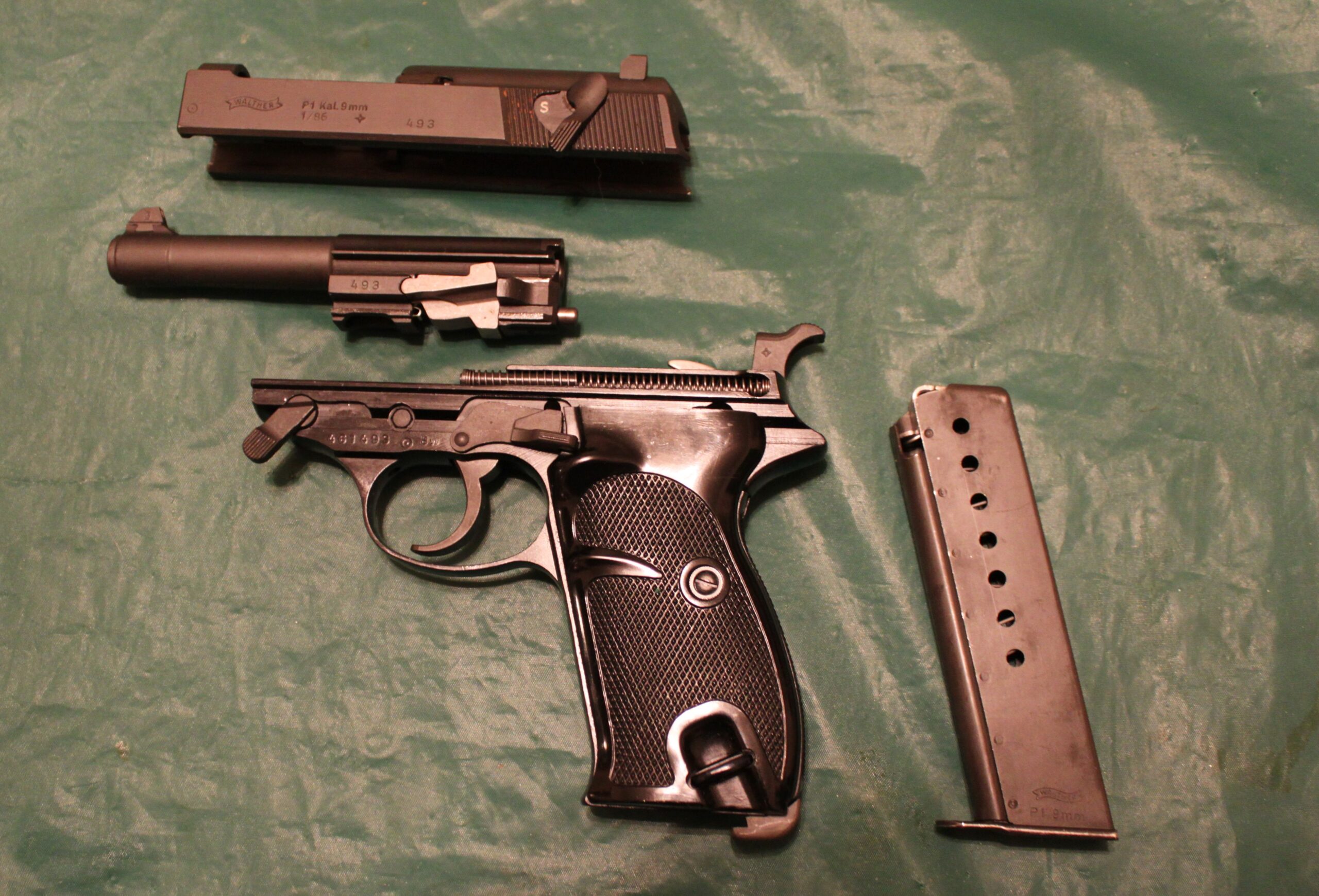
Although the improved quality of ammunition worldwide in the 1920’s had practically eliminated the hangfire problem the army brass had vivid bad memories of them. They wanted a safe way to instantly snap that primer again. Hence the Walther double action trigger. Now you could snap the cap several times with no danger to the shooter. They were never intended to be fired any way but as traditional single action automatics in combat. Double action triggers were Walther’s answer to hangfires.
As hangfires were still a vivid memory to most shooters they found widespread acceptance among the public and the military. Remember that there were still huge stocks of ammunition left over from WWI and only the new ammunition was more reliable.
While the Luger may wear out it’s barrel, the gun itself never seems to wear out. For a cheaper substitute the requirement was a design life of just 5,000 rounds. The P38 proved capable of surpassing that
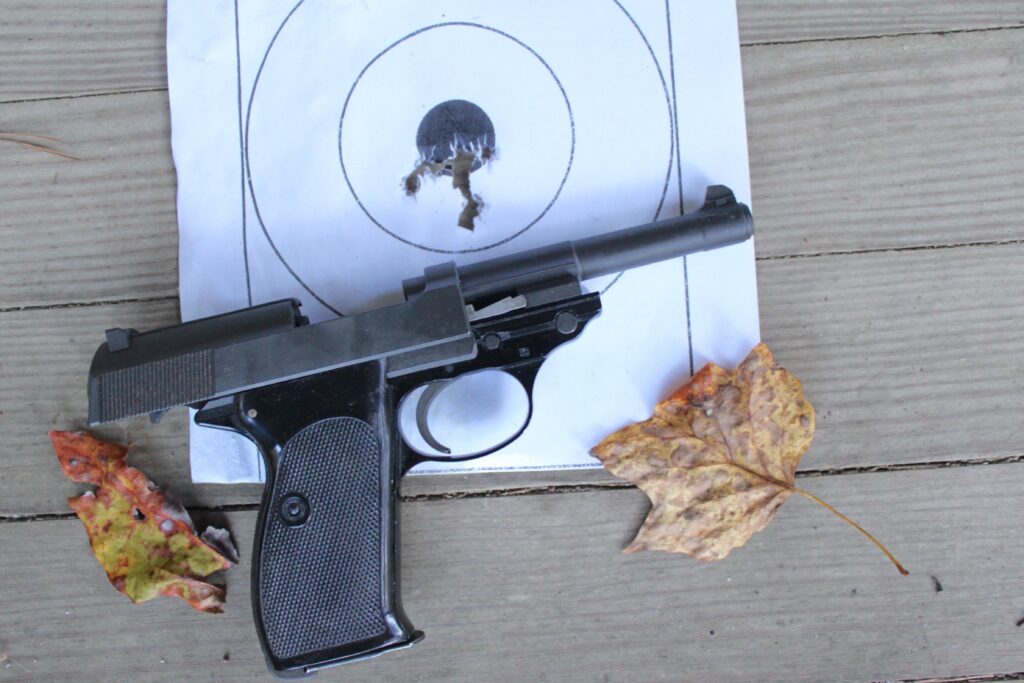
The Germans, and particularly the German military, had always placed great emphasis on their guns being lively in the hand, steady to aim, and fast natural pointers. No pistol points as naturally and accurately as the Luger but the P38 is still very good and there was no problem training men to accurately shoot it at normal pistol ranges. Like all German military guns of both World Wars, it’s ergonomics are excellent.
Reliability in Europe’s infamous mud was a strict requirement and the P38 did well at this. No one could be sure that the next war would be so different from the last one. The prospect of trench warfare and the artillery churned mud of the Great War battlefields was still something that had to be considered. After all, the new blitzkrieg tactics were still secret, and they had yet to be tried on the battlefield. No one can ever be sure what the next war will be like until it happens as the world found out at the start of WWII.
Another requirement was that it be easy to field strip and put back together. Again the P38 met their expectations. Just put the safety on and pull the slide back until it locks open. Remove the magazine. The barrel retaining latch is just like on a Luger pistol. Turn it as far as it will go then hold the slide so the recoil springs don’t throw it off and release the slide stop so you can pull the slide off the front of the pistol. To separate the barrel from the slide push in the exposed end of the locking block pin. Reassemble in reverse order.
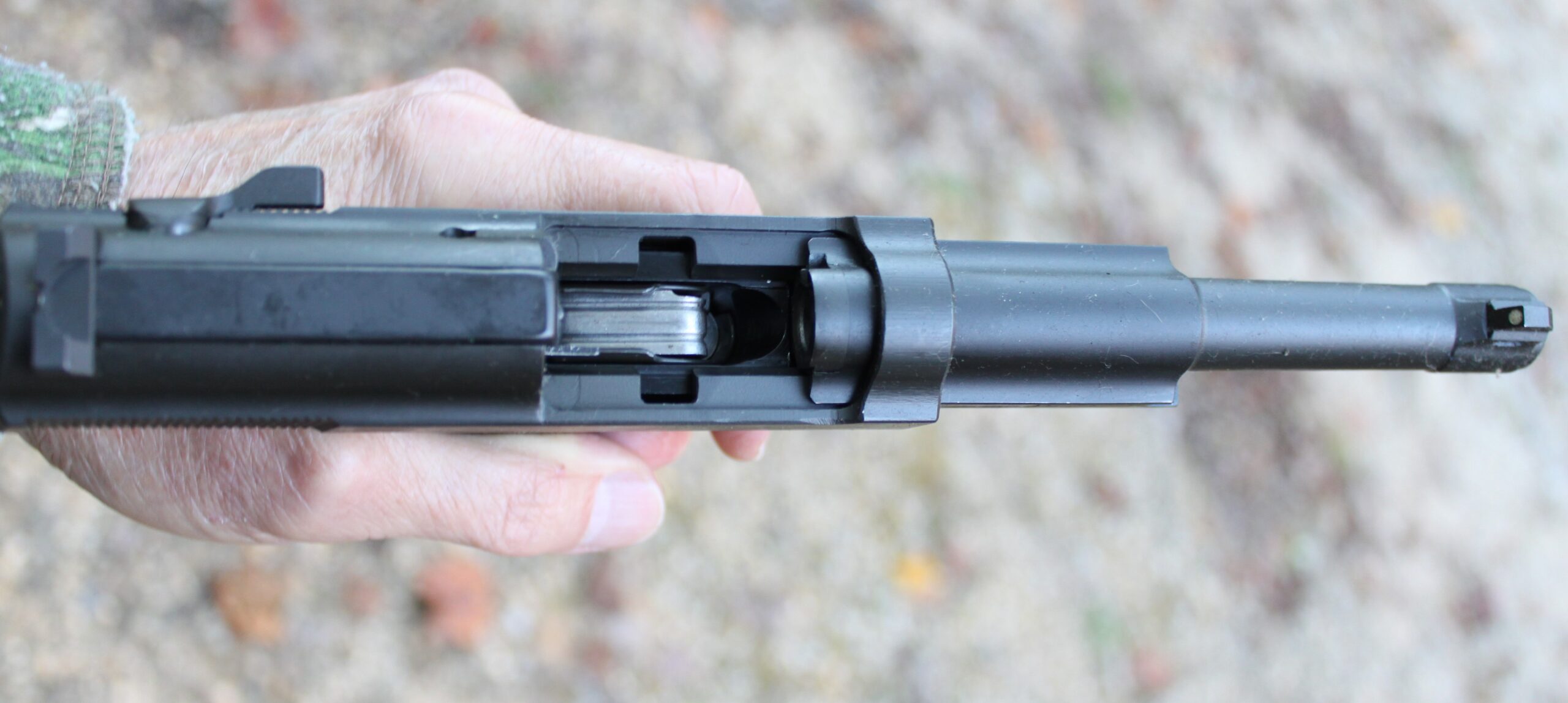
The P38 first appeared as the model HP for “Heeres Pistol” in 1938 and with minor changes it was accepted by the army as the P38 in 1938. It held 9 shots, eight in the magazine and one in the chamber. It’s overall length is 8 ½ inches and it weighs just 32 ounces. When postwar manufacture of the P38 resumed in 1957, the weight was reduced to 28 ounces by the use of an aluminum frame.
The slide release was positioned the same as the American M1911 and the safety was placed in the optimum position for easy use. Stamped parts are used whenever possible to keep costs down and speed production. Coil springs are used throughout it and ease of manufacture is stressed in the design.
Like other locked breech pistols the barrel and slide are locked together as they start to move back. In the P38 this continues until the end of the locking block pin hits the receiver face and cams the locking block out of its recess in the slide allowing the slide to travel fully to the rear until the two recoil springs bring it forward to chamber the next round.
This gun also features a loaded chamber indicator just above the firing pin that can easily be felt in the dark. When the P38 first came out a group of Great War veterans in the officer corps were complaining. “Why don’t they pay attention to these things and know if their pistol has a round chambered? Why do they need this?” One word answered them to everyone’s satisfaction. “Lieutenants.”
When the first P38s came out in 1938 one of the first guns was given to a Waffen SS officer who was one of the best men with a pistol in Germany. He liked it but never used it in the war sticking to his Luger pistol.
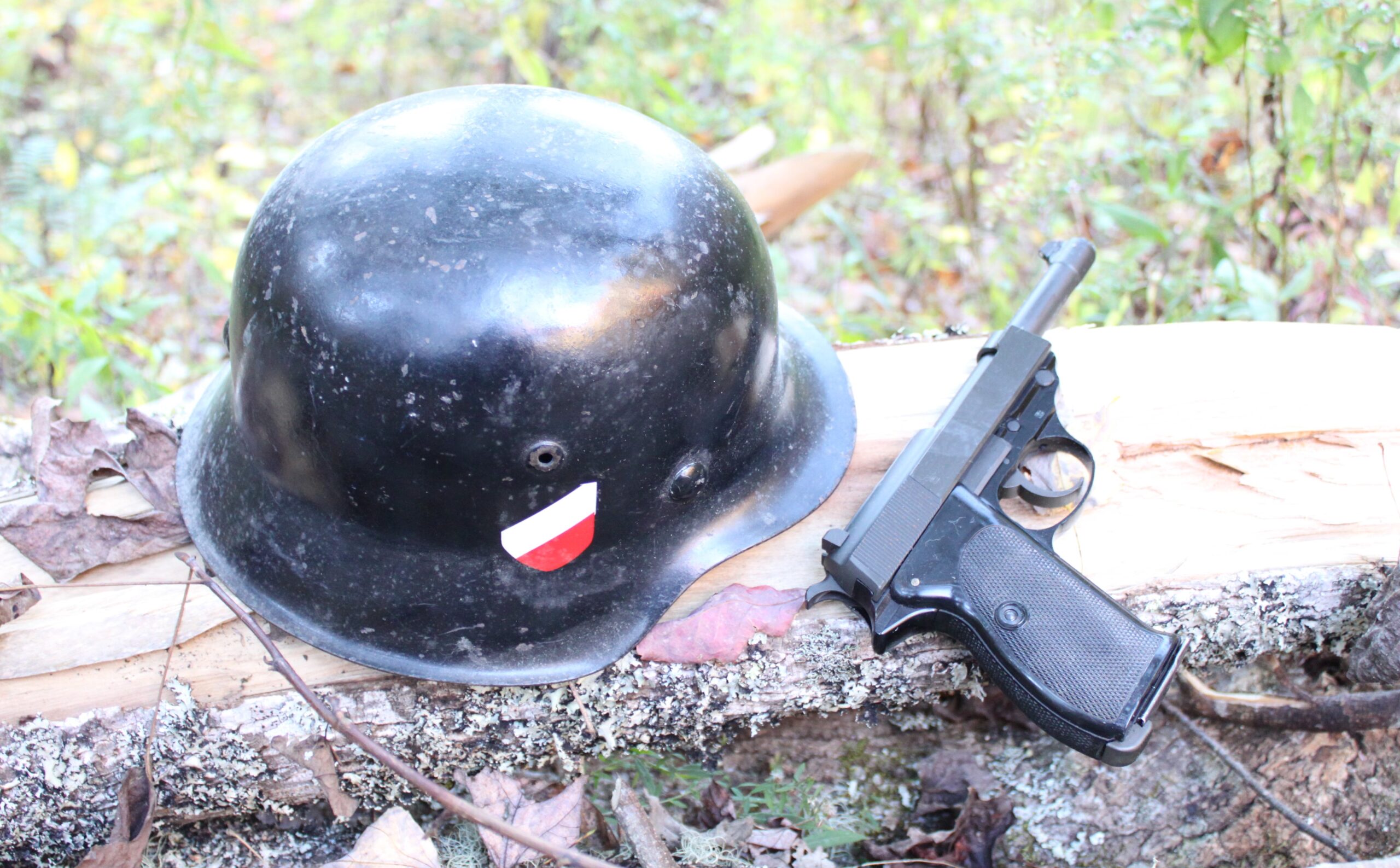
Walther had big plans for commercial sales of the P38 before the war and the 1939 Stoeger catalog had them for sale in 9MM, .38 Super, and .45 ACP. American Army Ordnance was not paying attention though and even as late as December 1941 there was no mention of the P38 in their technical manuals on the German Army.
The P38 gave good service to Germany in WWII, so much so that it was continued as the issue pistol in the post war West German Army.
Walther also sold many in the U.S. after production resumed in 1957. It’s light weight, good pointing, and soft recoil endeared it to many shooters. It takes all commercial 9MM ammo in stride. Its single stack magazine is more reliable than double stack single position feed magazines which can jam when a partially empty magazine gets too hard a jar.
Few guns have the level of good ergonomics that the Walther P38 possesses. This makes it easier to shoot accurately than most of its competitors. If you go to a smaller and lighter 9MM you start having more trouble keeping the accuracy standards of a full size military pistol. Smaller, lighter pistols are simply harder to hit with. None of the latest commercial pistols have the proven combat record of some of the older designs like the P38 so their reliability under all conditions is unknown. Most people want a proven design to stake their life on.
From prized war trophy and souvenir to full retail purchase the P38 has long been a prized handgun for a great many Americans. It continues to serve around the world today.



